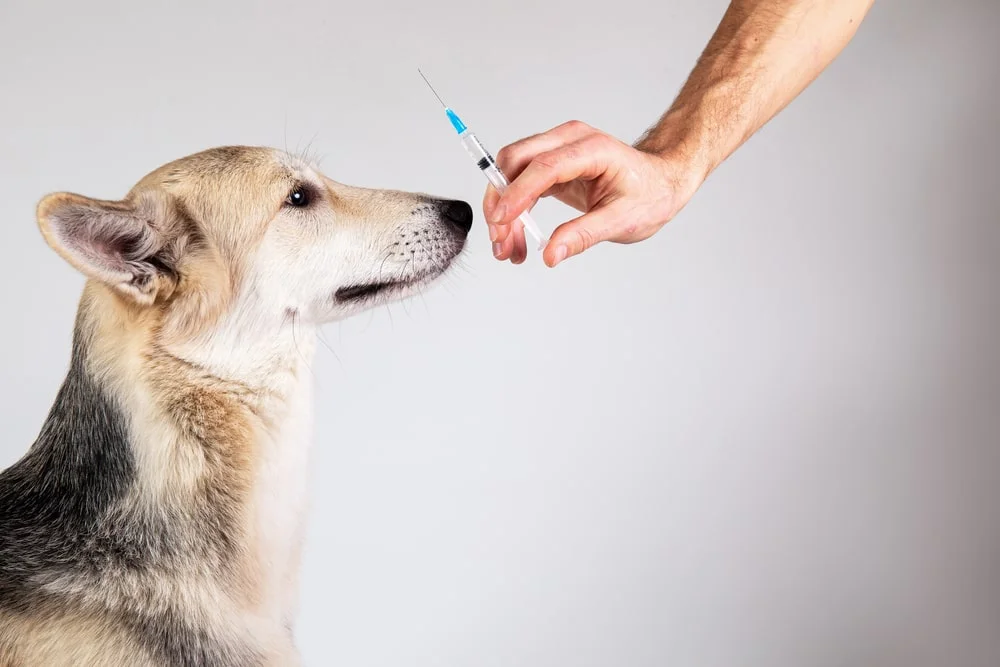PET HEALTH
Diabetes in Dogs: Symptoms, Treatment, & Insulin Cost
A diabetes diagnosis for your pup can be scary, and treating diabetes in dogs can be expensive. The cost of insulin for dogs can range from $30 – $150 monthly.1 That could be on top of the monthly costs of specialty foods and vet visits, too. Thankfully, a MetLife Pet Insurance plan may reimburse you for some of the costs of dog diabetes treatment and diagnosis.2
Let’s take a closer look at what canine diabetes is, how to manage it, and how pet insurance may be able to help you cover some of the related expenses.
MetLife Pet Can Help You Cover Dog Insulin & Other Diabetes Costs
What Is Dog Diabetes?
Diabetes is one of the most common dog diseases. It happens when the body doesn't properly use or make insulin, a hormone secreted by the pancreas. Diabetes affects how the body processes blood sugar (glucose), which is a primary source of energy.3
Dogs diagnosed with diabetes mellitus are dependent on potentially expensive daily insulin injections to maintain their blood sugar balance. While diabetes can’t be cured, it can be managed, meaning your dog can go on to enjoy a healthy and happy life with you.3
However, if diabetes is left untreated, prolonged uncontrolled high blood sugar could lead to cataracts or diabetic ketoacidosis, which is a medical emergency.3
Causes of Diabetes in Dogs
There are many factors that can put a dog at risk for diabetes, including:4
- Age: Most diabetic dogs are between the ages of 4 and 14 years old, with a diagnosis usually around 7 – 10 years of age.
- Sex: Female dogs are twice as likely to develop diabetes than male dogs.
- Weight: Being overweight can increase your dog’s insulin resistance. Obesity also puts them at risk of other diseases that can increase diabetes risk, like hypothyroidism.
- History of pancreatitis: Pancreatitis causes damage to the primary organ responsible for producing insulin. This can often lead to diabetes in dogs.
- Cushing’s disease: Similarly, Cushing’s disease causes the body to produce too much cortisol and puts dogs at risk of diabetes.
- Steroid medication use: If your dog takes steroids for allergies or an autoimmune condition, long-term use can increase their risk of developing diabetes.
- Genetics: Although diabetes can occur with any breed, some have a higher risk of developing it, like mini poodles, miniature schnauzers, Samoyeds, dachshunds, pugs, Australian terriers, fox terriers, and beagles.5
While some of these factors — like genetics — can’t be changed, it’s still important to know where your dog’s medical history puts them in terms of diabetes risk. Understanding and discussing these factors with your vet can help you prepare for the possibility of diabetes and take steps to help prevent it.
Signs of Diabetes in Dogs
Delaying treatment of dog diabetes can lead to organ damage and other complications. That’s why it’s so important to keep an eye out for some of the most common clinical signs, like:3,4
● Excessive thirst and changes to appetite
● Increased urination
● Weight loss
● Weakness and lethargy
● Dehydration
● Vision difficulties, like cataracts
● Chronic infections, like urinary tract infections (UTIs) or skin infections
If you notice any of these symptoms of diabetes in dogs, it’s important to see your vet as soon as you can so your dog can start receiving insulin treatment and get on the road to feeling better.
Dog Diabetes Treatment
Once your dog has been diagnosed with diabetes — usually through blood work and a urinalysis — the next step is treatment and life-long management. This typically involves glucose monitoring at home, routine diagnostics and checkups, and insulin therapy. Your vet may also recommend a specific diet to help your dog maintain blood sugar levels and a healthy weight.3,4
Your pet’s care team will teach you how to administer insulin injections. Your dog may start off with a specific treatment plan and dosages, but this can change throughout the rest of their life depending on how their body is responding to it.4
There are three different types of insulin your vet may prescribe: short-acting insulin, intermediate-acting insulin, and long-acting insulin.6 It’s important to follow your vet’s instructions and establish a regular schedule for giving your dog their medication, as you may be prescribed one or more types of insulin.
Types of insulin for diabetic dogs
Short-acting insulin: This insulin goes into effect almost immediately by quickly stabilizing a dog’s blood glucose levels, but the effects don’t last very long. Because of this, short-acting insulin is typically used by vets to treat diabetic ketoacidosis or as additional insulin coverage during stress or after high-sugar meals.6
Intermediate-acting insulin: This insulin takes longer to go into effect, but it also has a longer impact on your dog’s blood sugar. Interestingly, it doesn’t last as long in cats with diabetes. You’ll typically need to administer intermediate-acting insulin once or twice per day.6
Long-acting insulin: This insulin helps maintain stable blood sugar by mimicking natural insulin release levels. Although it can last for an extended duration, it may still need to be administered once or twice daily depending on your dog’s needs.6
The Cost of Insulin for Dogs
The price of insulin for dogs can vary greatly. While the average range is between $30 and $150 per month, it can cost much more.1 The difference depends on your dog’s specific dosage and where you buy the insulin.
Generally, larger dogs will need higher dosages, resulting in higher monthly costs. Your vet may be able to help you find a cheaper source of insulin, or you can search online to compare costs. It’s also possible that pet insurance could cover diabetes costs — like with MetLife Pet policyholder pup, Cecily.
Cecily’s owners were used to managing her diabetes and paying for insulin with the help of their dog insurance policy. But one month, the price jumped to nearly $825. Because it’s covered by their MetLife Pet policy, they weren’t as worried about the increased medication price. Cecily’s owners were reimbursed for about $725, allowing them to focus on their pup’s health and happiness.7
Other dog diabetes treatment costs could include exams, diagnostics, and hospitalizations — which can also typically be covered by pet insurance.
Pet Insurance Could Help You Save on Dog Diabetes Costs
Diabetes in dogs may not be the most expensive condition out there, but the treatment cost is still nothing to sneeze at. Any unexpected bills could be a significant burden for pet owners. A dog insurance policy with MetLife Pet can help you manage your pup’s diabetes by reimbursing you for a portion of covered and approved medical bills, including vet visits and prescriptions.2
Take Brit, for example. When she went to the vet and was diagnosed with diabetes, the exam and diagnostics were around $1,550. Her owners’ MetLife Pet policy reimbursed them over $1,200 of the bill. Then there’s Bella, who needed testing for a diabetes-related issue. The diagnostics cost nearly $300, but her MetLife Pet policy reimbursed over $250 of that to her owners.7
Don’t wait until it’s too late. Get a free quote today from MetLife Pet Insurance to help make the care your dog deserves more financially accessible.



